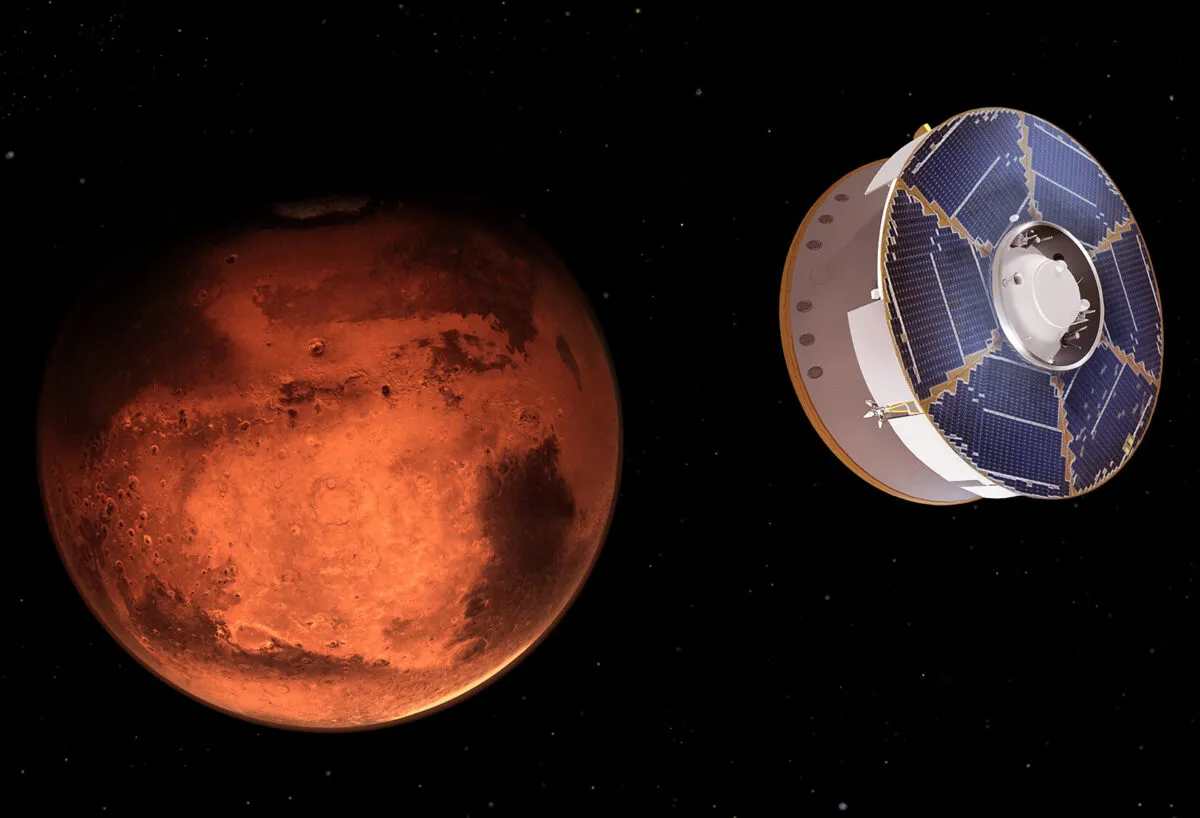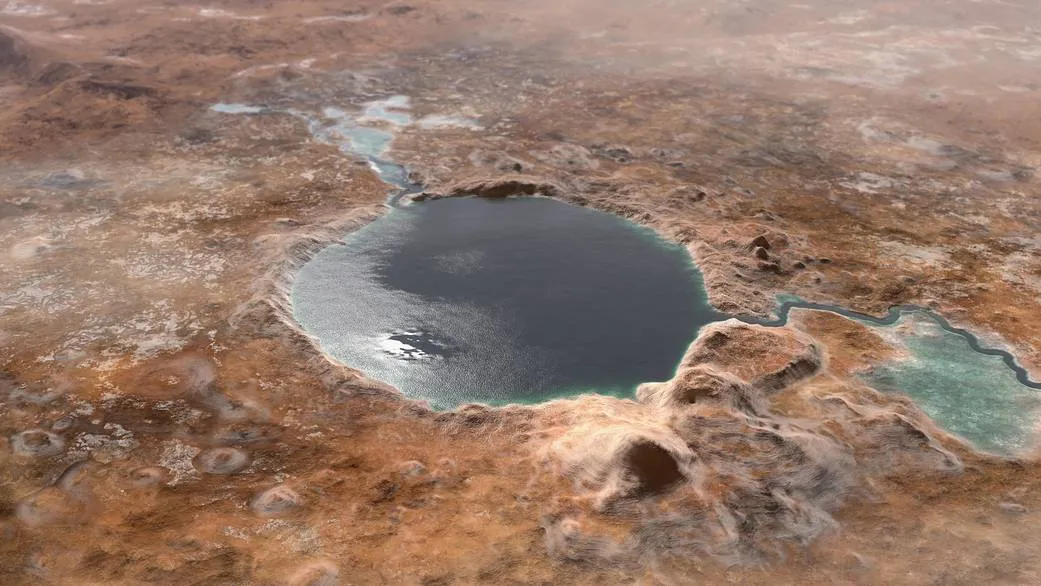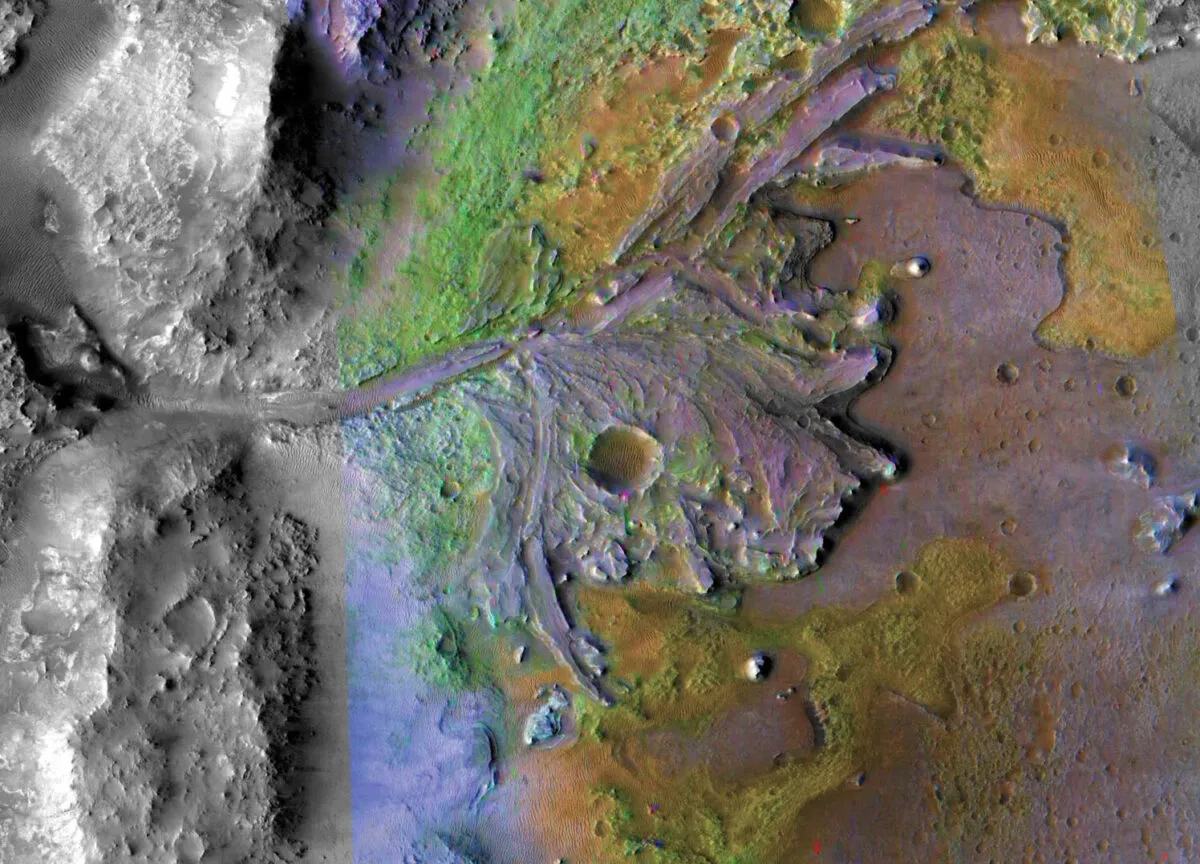NASA’s Perseverance rover landed on the surface of Mars, touching down in Jezero Crater on the Red Planet at 20:55 UTC on 18 February 2021.
The successful landing was the culmination of a 203-day journey from Earth that saw it travel a total of 472 million km.

In a familiar sight for anyone who closely follows NASA’s robotic space probe missions, planetary scientists and engineers erupted into applause once the successful landing had been confirmed.
Perseverance is now scouring the surface of Mars searching for organic molecules among the rocks and sediment, or other evidence that might show whether Mars once hosted life in its ancient history.

NASA's Perseverance rover launched on 30 July 2020 from Cape Canaveral Air Force Station in Florida and is the latest NASA mission on its way to Mars.
It is one of a trio of missions that launched to Mars in 2020 including the Emirates Hope probe.
But what is the Perseverance rover, what can it do, and what do NASA scientists hope it will achieve on the surface of Mars?
Video: Perseverance rover lands on Mars
More about Mars exploration:
- What did astronomers believe about Mars before the space age?
- Buzz Aldrin's vision of Mars exploration
- How will humans survive the journey to Mars?
What will Perseverance do on Mars?
Central to Perseverance's mission is the search for signs of ancient life. While today Mars is a dry, barren, hostile world, planetary scientists believe that in its ancient history Mars may have been a much warmer, wetter place where life could have existed.
Perseverance will be investigating whether or not there are signs that Mars ever hosted microbial life, but it will also be collecting samples and storing them for their eventual return to Earth for further analysis.

What is the Perseverance rover?
Perseverance is a 1,025kg wheeled machine that can traverse the rugged and often treacherous surface of Mars.It is about 3 metres long, 2.7 metres wide and 2.2 metres tall and its robotic arm is about 2.1 metres long.
It is battery-powered, containing 2 lithium-ion rechargeable batteries that are powered by heat from the radioactive decay of plutonium-238.
It is fitted with a drill, a camera, a sample handling arm and sample collection tubes, to enable scientists to get a good view of Mars and analyse what they find.

Where did Perseverance land on Mars?
The Perseverance rover touched down on Jezero Crater on Mars, which is a 45-kilometer wide basin located in the Red Planet's northern hemisphere. It is thought that about 3.5 billion years ago a river flowed in this region, and that it may contain deposited sediments.
The NASA team overseeing the Perseverance mission believe the deposits and the region in the surrounding ancient delta could contain preserved organic molecules and other signs of microbial life that once existed on Mars.

The problem is that the sort of Martian terrain that planetary scientists are really interested in is the sort of terrain on which it's hard to land a rover.
“Jezero is 28 miles wide, but within that expanse there are a lot of potential hazards the rover could encounter: hills, rock fields, dunes, the walls of the crater itself, to name just a few,” says Andrew Johnson, principal robotics systems engineer at NASA’s Jet Propulsion Laboratory.
“So, if you land on one of those hazards, it could be catastrophic to the whole mission.”
Explore the Perseverance rover's landing site with this interactive NASA map below. The landing area is marked with the blue oval.
How did the rover land?
Perseverance's landing was largely autonomous and carried out by the rover itself using complex coding built into its software.
About 10 minutes before Perseverance entered Mars's atmosphere, it shed all its solar panels, shields and fuel tanks that were used to get it from Earth to its final destination. Thrusters fired in order to position the payload and make sure the heat shield was facing forward.
Throughout its descent, the Mars Entry, Descent, and Landing Instrumentation 2 (MEDLI2) sensor suite was able to collect data about the planet's atmosphere, while the Terrain-Relative Navigation system autonomously guided it to its safe landing on the surface of Mars.

Perseverance was equipped with various new technologies to help it land safely, including a Range Trigger, which helped determine when the rover's parachute should open.
Previous rover missions have seen parachutes open as early as possible in order to ensure a safe landing, but the problem with that safety precaution is that the rover may land far away from its target site.
The Range Trigger was designed to enable for more accurately-timed deployment of the parachute during descent, depending on Perseverance's location relative to Jezero Crater.
The Terrain-Relative Navigation system helped it avoid treacherous terrain during landing, and its Advanced aeroshell sensor package protected the rover and collected data that planetary scientists can use to better understand Mars's atmosphere and conditions.

What science instruments does Perseverance have?
The rover's software contains artificial intelligence algorithms that, says NASA, enable it to work more autonomously and with less input from scientists on the ground than previous rovers.
It is also equipped with an instrument called MOXIE - Mars Oxygen In-Situ Resource Utilization Experiment - that will explore whether carbon dioxide from Mars's atmosphere can be used to produce oxygen for future crewed missions to Mars. Oxygen could also be useful for rocket propellant during future missions.

The MEDLI2 (Mars Entry, Descent and Landing Instrumentation 2) sensors on the rover can measure the surrounding environment and the performance of Perseverance's heat protection systems.
And its MEDA (Mars Environmental Dynamics Analyzer) instrument collects information about the weather, climate and the notorious Martian dust storms that can smother the entire planet. This may be useful for understanding and predicting Mars dust storms for future crewed missions.

How will Perseverance search for signs of life?
Studies of our own planet have shown that the majority of life - as we know it - requires water to survive and flourish, and this is a key tenet driving the search for life elsewhere in the Solar System, from the subsurface oceans of frozen moons like Enceladus at Saturn or Europa at Jupiter - for more on this read our interview with NASA scientist Kevin Peter Hand - to planets that may once have hosted water on their surface like Mars.
In its ancient history, Mars was warmer and wetter and may have supported microbial life. Perseverance will attempt to find evidence to help planetary scientists conclude whether this is indeed the case.

The rover will be able to detect organic matter and minerals, map the chemical composition of rocks and sediments and zoom in on distant rocks and rugged terrain for further inspection.
It's also equipped with a laser that can zap rocks and study their composition by analysing the fine debris, and can use radar waves to take a look at geological features under the surface of the planet.
Perseverance also has a drill that can bore down into the surface and collect samples in tubes. It will then store these samples and later drop them at a safe location for a future NASA/ESA mission to collect and return to Earth for analysis.

Is there a helicopter going to Mars?
Ingenuity is the name given to the helicopter that's attached to the belly of the Perseverance rover. The helicopter is a technology demonstration to see whether it's possible to fly in the thin Martian air.
If successful, it could make helicopters a viable option for future Mars missions, where they could provide a support role for rovers by seeking out interesting or dangerous terrain.
Ingenuity uses solar power to charge its batteries and can operate autonomously. It is about 0.5 metres tall and its rotor blades span 1.2 metres across. It weighs about 1.8kg and is equipped with computers, navigation systems and two cameras.

Will Perseverance help prepare for crewed Mars missions?
NASA seems to think so. It is hoped that the Terrain-Relative Navigation will be able to inform safe landings for future crews arriving on Mars, but the technology could also be used for crewed missions to the Moon.
Plus, if its MOXIE instrument proves that Martian CO2 can be converted into breathable oxygen, this could have huge ramifications for crewed missions to Mars in future.
Will Perseverance capture images of Mars?
Images of Solar System bodies captured by NASA and ESA probes are among the agency's best tools for communicating science and discoveries to the public, so space and astronomy fans are sure to be treated with a wealth of images, panoramas, selfies and videos over the coming years.
Perseverance has 19 cameras on the rover and 4 on other parts of the spacecraft that are involved in entry, descent and landing on the Red Planet's surface.
NASA has even promised audio recordings of the sound of Perseverance landing on Mars and the ability for planetary scientists to listen to Martian wind via the rover's two microphones.

Where to find out more about the Perseverance rover
NASA is never shy about communicating its plans and missions to the public, and the Perseverance mission has so far been no different.
You can find out more on the Mars2020 website and the Perseverance webpage.
If you are a Twitter user, follow the Perseverance Twitter account or NASA's Mars Twitter account, or the hashtag #CountdownToMars.
You can also follow the Perseverance rover on Facebook or NASA's Mars Facebook page.
Iain Todd is BBC Sky at Night Magazine's staff writer.
